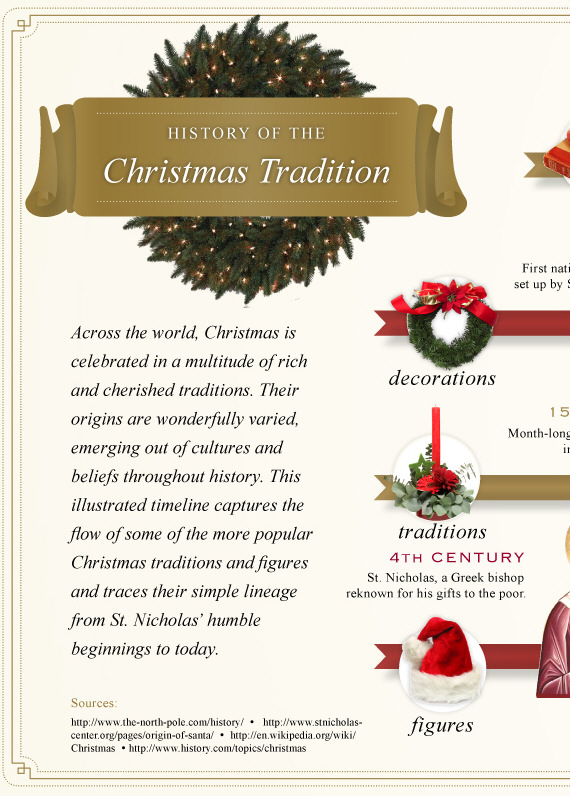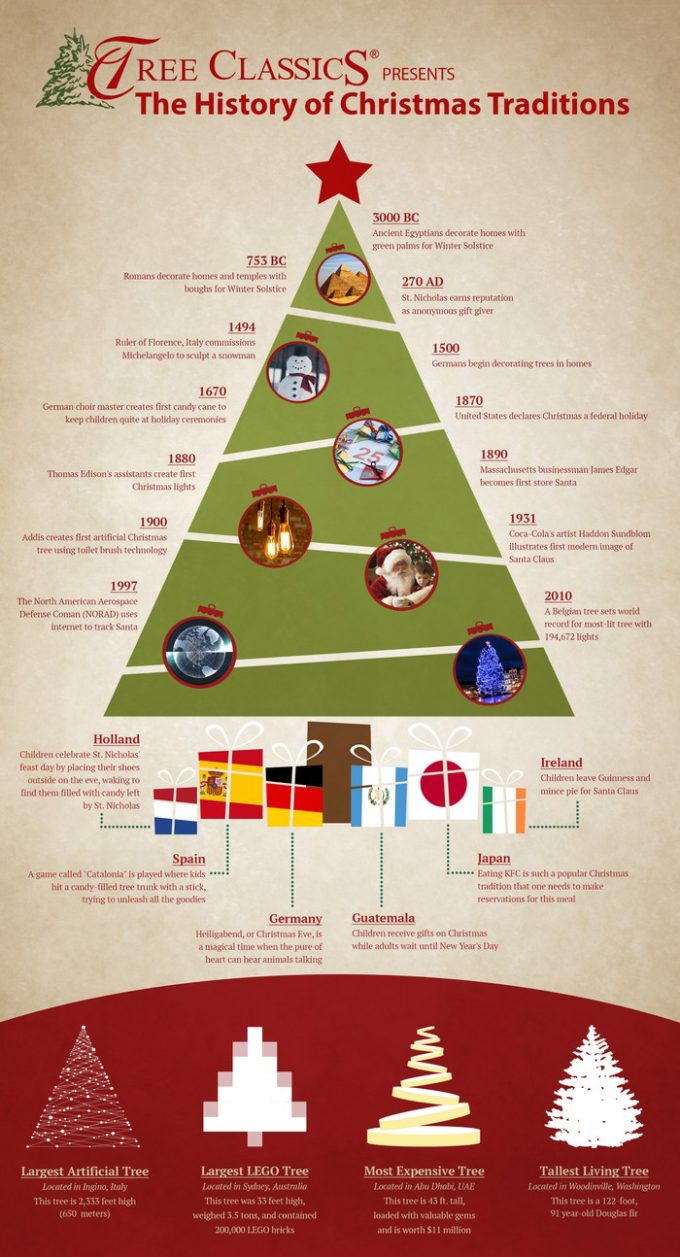Reference
Reference


:max_bytes(150000):strip_icc()/GettyImages-116032654-2000-d5d2dd2d1d4b4f96ac0477dc1d3bd26e.jpg)

Moonshot's Answer
Significant traditions associated with the Christmas and holiday season include:
-
Gift Giving: Originating from the Christian tradition of the Magi bringing gifts to baby Jesus and the Roman celebration of Saturnalia.
-
Christmas Tree: First used by German Lutherans in the 16th century, symbolizing Christianity.
-
Manger Scenes: Popularized by Saint Francis of Assisi in 1223, they depict the nativity of Jesus.
-
Christmas Carols: Originating in the 13th century, they were communal folk songs sung during celebrations.
-
Santa Claus: Based on the historical figure of Saint Nicholas, a 4th-century Christian bishop known for gift-giving.
-
Hanukkah: The Jewish Festival of Lights, celebrated over eight days.
-
Kwanzaa: Celebrated from December 26 to January 1, it focuses on African-American culture and heritage.
-
Epiphany: Celebrated on January 6, it commemorates the visit of the Magi to the baby Jesus.
-
Advent: A season of preparation for the celebration of Christmas.
-
Christmas Dinner: Often includes turkey or ham, stuffing, and trimmings.
-
Decorating with Holly and Mistletoe: Both plants have religious symbolism.
-
Leaving Cookies and Milk for Santa: A tradition that started in the 1930s.
-
Yule Log: A large log burned in the hearth, symbolizing the return of the sun.
-
St. Nicholas Day: Celebrated on December 5th or 6th, it honors the birthday of Saint Nicholas.
-
Festivus: A secular holiday that includes the "Airing of Grievances."
-
Skiing Santas: An event where participants dress as Santa Claus and ski down the slopes.
-
Posadas: A Mexican tradition reenacting Mary and Joseph's search for shelter.
-
Up Helly Aa: A Scottish tradition involving a Viking-themed fire festival.
-
Afro-Caribbean Parang: A celebration involving music and dance.
-
Lutheran Christmas: A tradition where the oldest daughter wakes the family, dressed as a saint.
These traditions vary across cultures and regions, reflecting the diversity of the holiday season.
Follow Up
Related
Which nation ranked second in the medal table of the 1985 Championships?
How did the Cross Country Ski Areas Association (CCSAA) start?
safety measures for using hand tools and maintenance of hand tools
What battles and treaties are associated with Scandinavian Scotland?
Which historical family was primarily associated with the ownership of Garendon Hall?